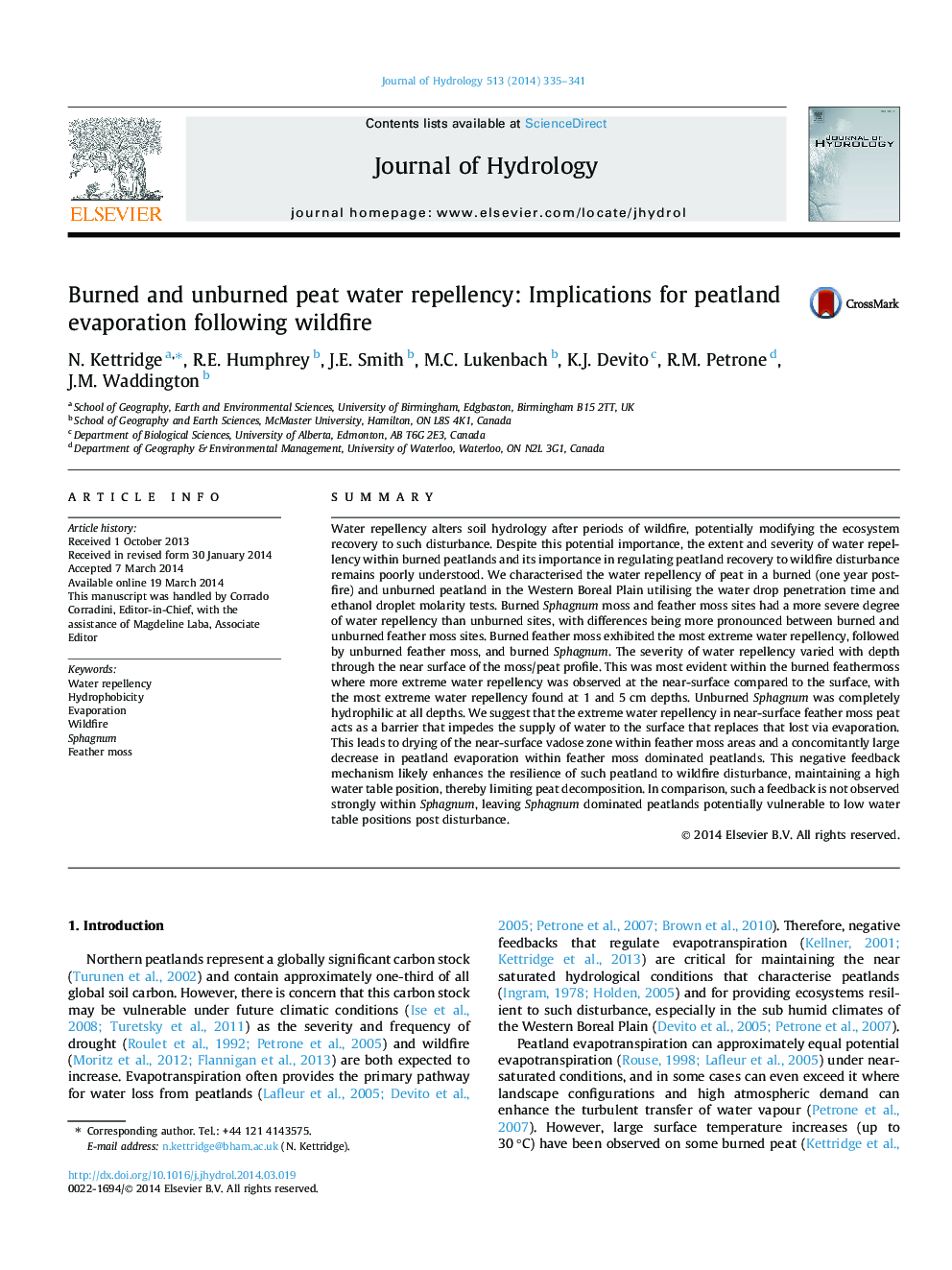| کد مقاله | کد نشریه | سال انتشار | مقاله انگلیسی | نسخه تمام متن |
|---|---|---|---|---|
| 6412771 | 1629935 | 2014 | 7 صفحه PDF | دانلود رایگان |
- Wildfire increases water repellency of Sphagnum and feather moss.
- Burnt feather moss is more severely water repellent than Sphagnum both pre- and post-wildfire.
- Feather moss is severely water repellent at a depth of 1-5 cm and only slightly water repellent at the surface.
- Water repellency may reduce evaporation, increasing peatland resilience to wildfire within feather moss dominated peatlands.
SummaryWater repellency alters soil hydrology after periods of wildfire, potentially modifying the ecosystem recovery to such disturbance. Despite this potential importance, the extent and severity of water repellency within burned peatlands and its importance in regulating peatland recovery to wildfire disturbance remains poorly understood. We characterised the water repellency of peat in a burned (one year post-fire) and unburned peatland in the Western Boreal Plain utilising the water drop penetration time and ethanol droplet molarity tests. Burned Sphagnum moss and feather moss sites had a more severe degree of water repellency than unburned sites, with differences being more pronounced between burned and unburned feather moss sites. Burned feather moss exhibited the most extreme water repellency, followed by unburned feather moss, and burned Sphagnum. The severity of water repellency varied with depth through the near surface of the moss/peat profile. This was most evident within the burned feathermoss where more extreme water repellency was observed at the near-surface compared to the surface, with the most extreme water repellency found at 1 and 5Â cm depths. Unburned Sphagnum was completely hydrophilic at all depths. We suggest that the extreme water repellency in near-surface feather moss peat acts as a barrier that impedes the supply of water to the surface that replaces that lost via evaporation. This leads to drying of the near-surface vadose zone within feather moss areas and a concomitantly large decrease in peatland evaporation within feather moss dominated peatlands. This negative feedback mechanism likely enhances the resilience of such peatland to wildfire disturbance, maintaining a high water table position, thereby limiting peat decomposition. In comparison, such a feedback is not observed strongly within Sphagnum, leaving Sphagnum dominated peatlands potentially vulnerable to low water table positions post disturbance.
Journal: Journal of Hydrology - Volume 513, 26 May 2014, Pages 335-341
